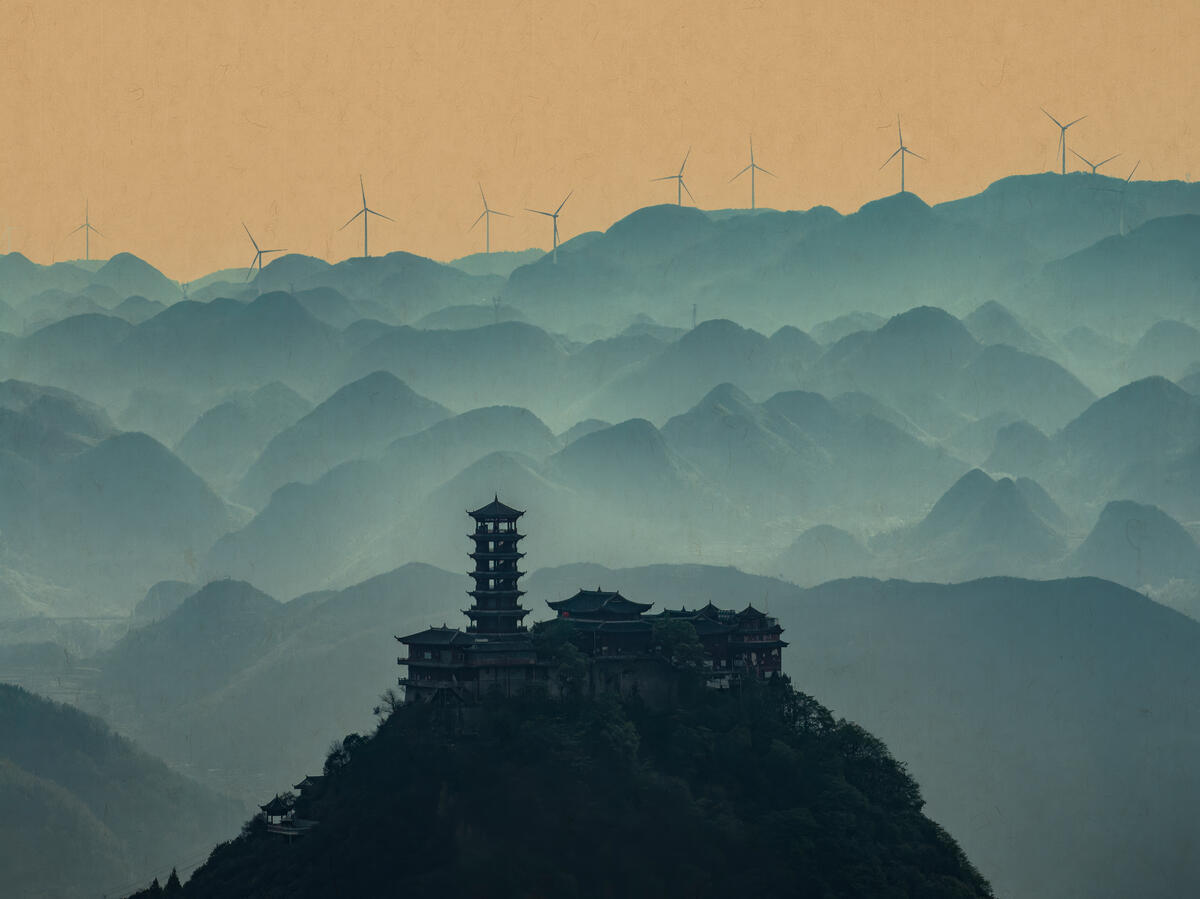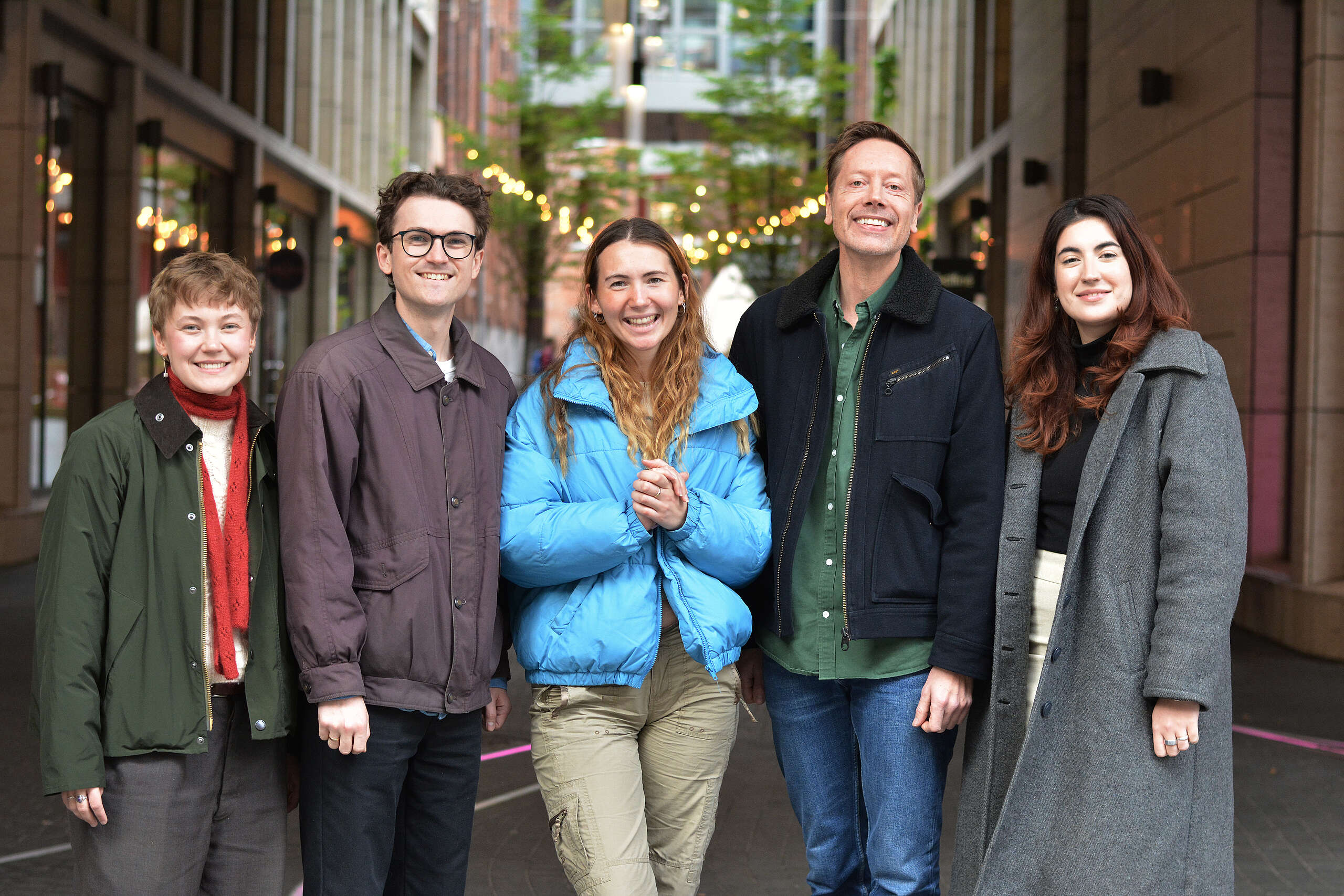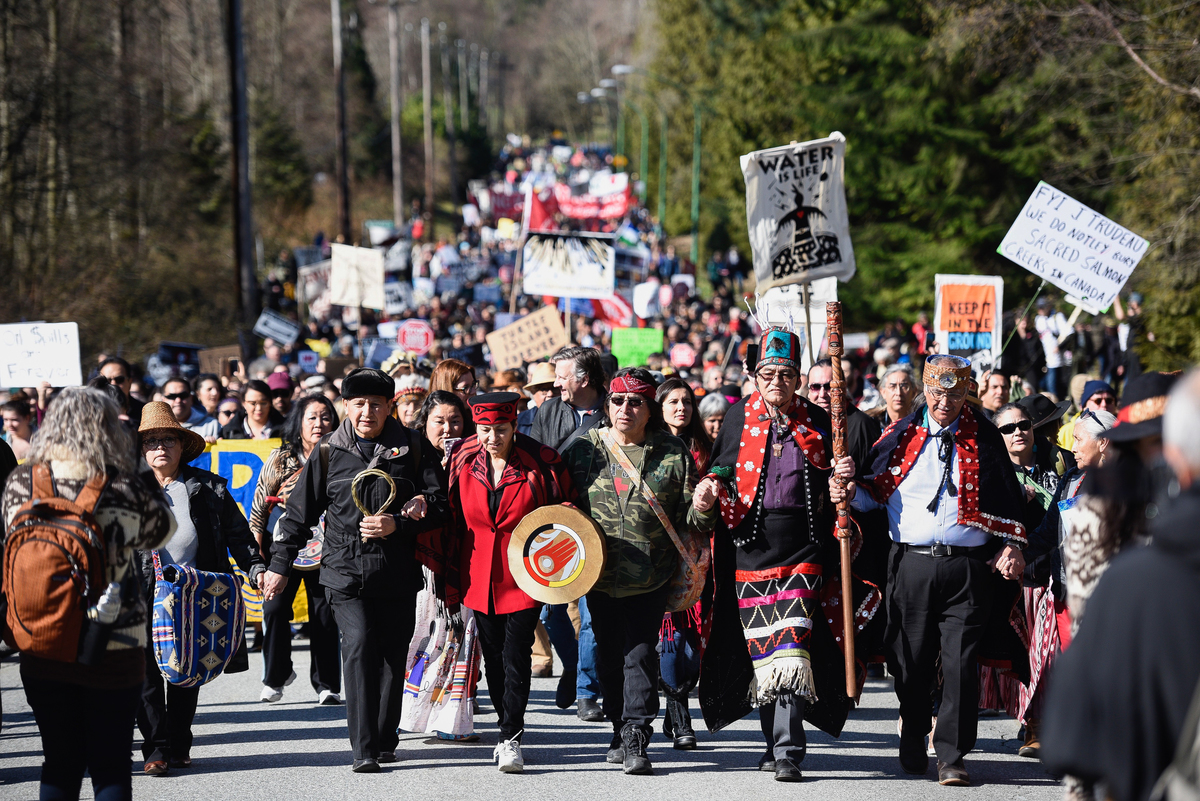
More than 10,000 people marched in British Columbia last month to protest the Kinder Morgan pipeline expansion. © Rogue Collective
The resistance to oil company Kinder Morgan’s tar sands pipeline in Canada is heating up. In early March, Indigenous leaders from across Canada and the United States came together to build a traditional “Watch House” — or a place to keep guard — near the pipeline route.
If completed, the pipeline would carry bitumen — one of the most dangerous and polluting types of oil — from the Alberta tar sands in central Canada out to the Pacific Ocean. From there, it would be shipped down the coast to California and overseas markets. Kinder Morgan does not have consent from the Indigenous Peoples whose territory the pipeline would cross.
On 10 March, more than 10,000 people marched in British Columbia to support the Indigenous-led protest against the pipeline. Across the eight days of protest, more than 170 people were arrested.
To better understand the protesters’ concerns, I looked at their stories.
There was Ocean Hyland, a young woman from the Tsleil-Waututh community in British Columbia who marched alongside family and friends.
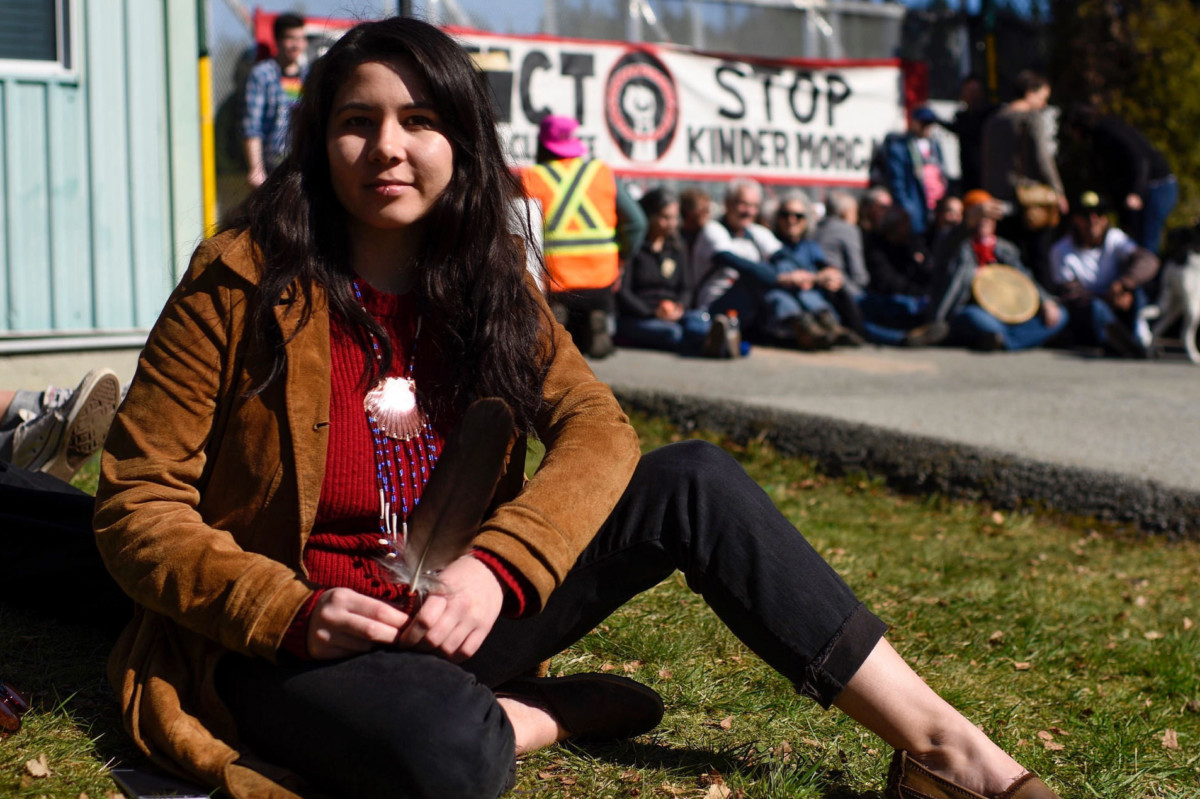
Ocean Hyland is from the Tsleil-Waututh Nation, whose territory is threatened by Kinder Morgan’s proposed oil sands pipeline. © Rogue Collective / Greenpeace
“It’s not if, but when Kinder Morgan’s pipeline or tankers spill,” Hyland said. “Just look at the Dakota Access Pipeline, which, in only six months of operation, has already spilled five times. It is up to us all to protect the sea and the land, and to speak on behalf of the creatures who share this Earth. Water is life. It connects, sustains, and keeps us alive every day.”
There was also Terry Christenson a 70-year-old grandfather who sat in a tree directly in the path of Kinder Morgan’s clear-cutting activity. “This is insane, you can’t even quantify how much fresh water this pipeline crosses,” Christenson said.
Meet Terry. He's a 70-yr-old grandfather who literally "rose up" against Kinder Morgan's pipeline, setting up an aerial camp in the trees at the oil giant's Burnaby terminal. #StopKM #ProtectTheInlet pic.twitter.com/d8vdbRGOxY
— Greenpeace Canada (@GreenpeaceCA) March 22, 2018
Greenpeace founders Rex Weyler and Bob and Barbara Stowe also protested the pipeline. Alongside the familiar faces were unexpected ones, like Canadian musician Grimes and former pipeline environmental engineer Romilly Cavanaugh. Cavanaugh used to work for the company that owned the pipeline Kinder Morgan is currently trying to expand.
“I lived in fear when I worked for Trans Mountain because the reality is that no amount of equipment or people is going to change the fact that in the event of a spill, they will be able to recover very little,” she said.
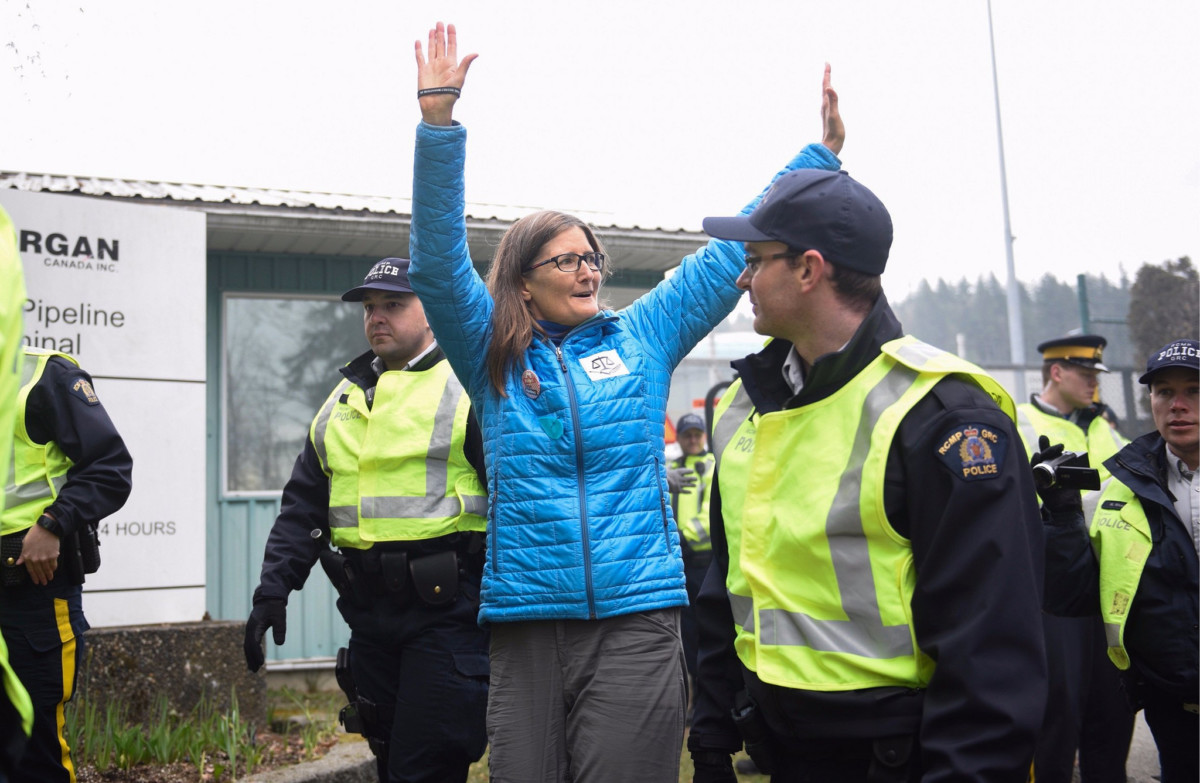
Former Trans Mountain employee Romilly Cavanaugh joined protesters in opposing the company’s proposed oil sands pipeline expansion. © Rogue Collective
Pipeline companies like Kinder Morgan and Energy Transfer Partners (ETP) — the company behind the Dakota Access pipeline — have a history of “riding roughshod” over the rights of Indigenous Peoples and of trying to silence protesters.
As Jackie Fielder recalled in a Teen Vogue interview, thousands of Indigenous Peoples and their supporters faced “surveillance, rubber bullets, attack dogs, concussion grenades, and water cannons in subfreezing temperatures” at the Standing Rock protests against the Dakota Access Pipeline.
Violence against people expressing freedom of speech and protecting their homes is appalling. But what followed Standing Rock is also outrageous. ETP filed a baseless $900 million SLAPP (Strategic Lawsuit Against Public Participation) suit against Greenpeace entities (Greenpeace International and Greenpeace USA), independent organisation BankTrack and the movement Earth First!, accusing the organisations of being a “criminal enterprise” that has orchestrated the protests.
Using the lawsuit, ETP’s aim is to suppress protest and divide people. Big oil companies like Kinder Morgan and Energy Transfer Partners, and the banks that fund them, might have plenty of money for lawsuits, but communities have something more valuable — they have people.
Instead of driving us apart, the lawsuit has only made the movement stronger.
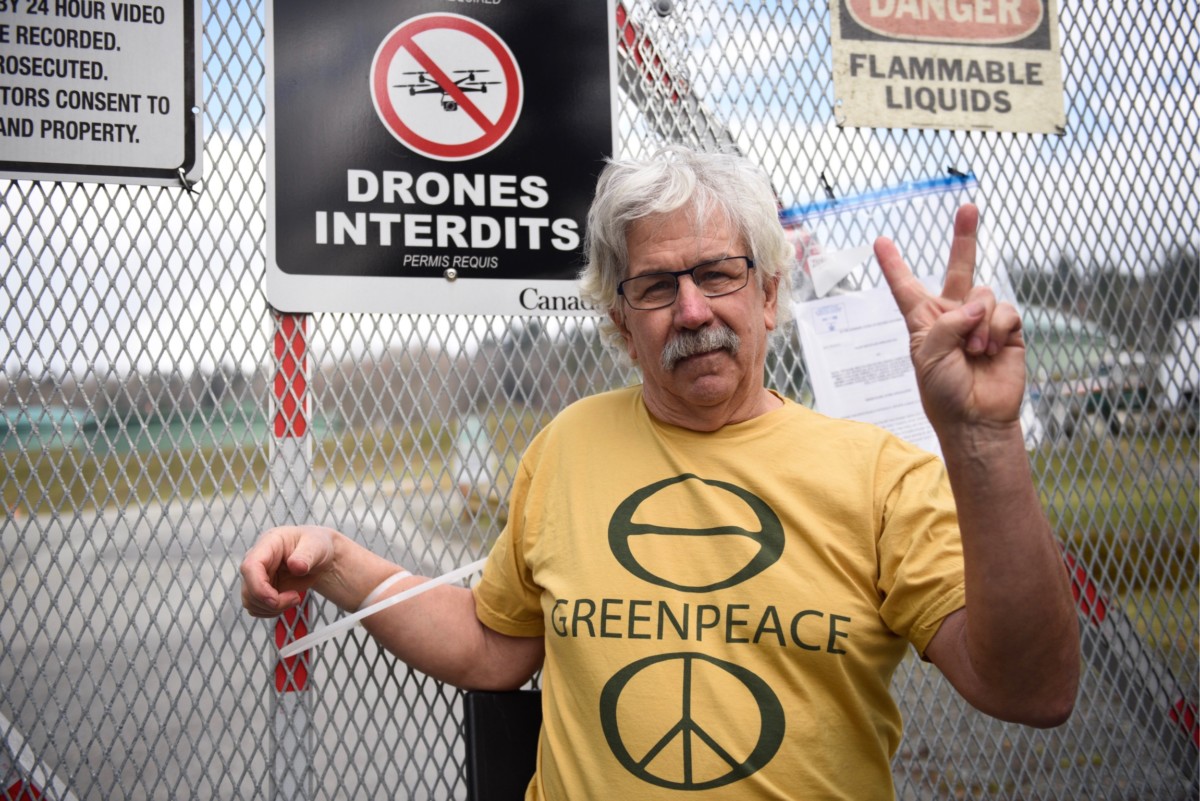
Greenpeace founder Rex Weyler joins indigenous activists, senior citizens and other members of Greenpeace founding families to block the front gates to Kinder Morgan’s construction site on Burnaby Mountain.in British Columbia. In solidarity with Coast Salish communities, they aim to show the world that Canada is going down the wrong path on climate and on reconciliation with Indigenous Nations in building this pipeline.
The Kinder Morgan pipeline would increase supertanker traffic in coastal waters seven-fold. Scientists have warned that increased supertanker traffic could interrupt the feeding patterns of the endangered orcas, pushing the species to the brink of extinction.
On top of that, the U.S. crude oil pipeline system as a whole has averaged one significant incident per year per 1,000 miles of pipe for the past decade. An oil spill would risk damage to the land and contaminate precious drinking water for communities along the pipeline route.
All of that added up to make more than 170 people willing to risk arrest to stop this disastrous pipeline.
“Forty-six years ago Greenpeace got its start right here in Vancouver protecting this coastline and the world from the sorts of ecological disasters and social disruption that Kinder Morgan’s pipeline threatens,” said Weyler. “Like then, we stand now for protection of the natural bounty that keeps our communities alive and prosperous. We stand here on the land and by the waters of the Tsleil Waututh people, who have shown us generosity and taught us responsibility, in solidarity and prepared to go to jail, to preserve the ecological integrity of this coast for ourselves and future generations.”
Leola Abraham is a global communications lead with Greenpeace USA.


